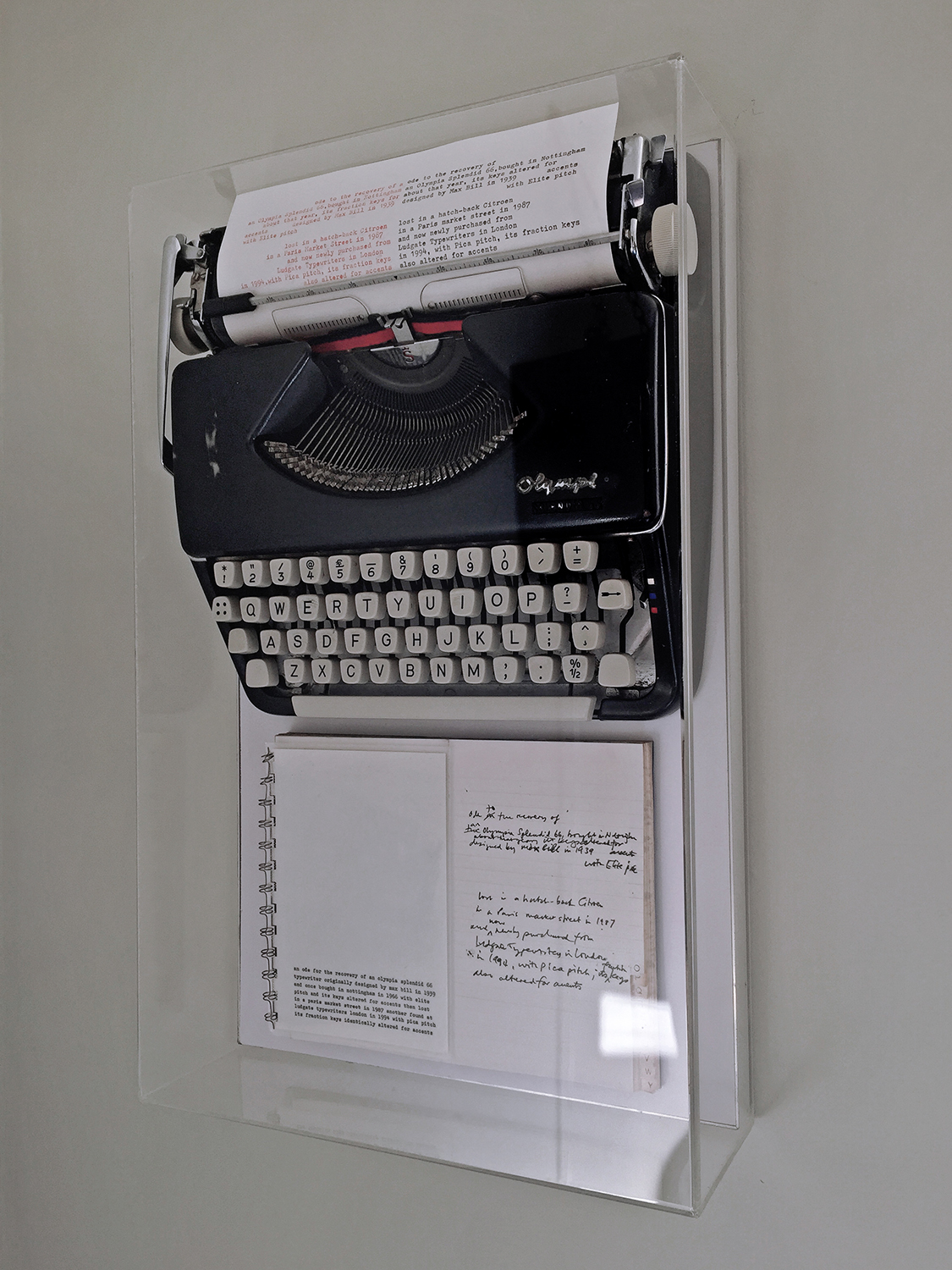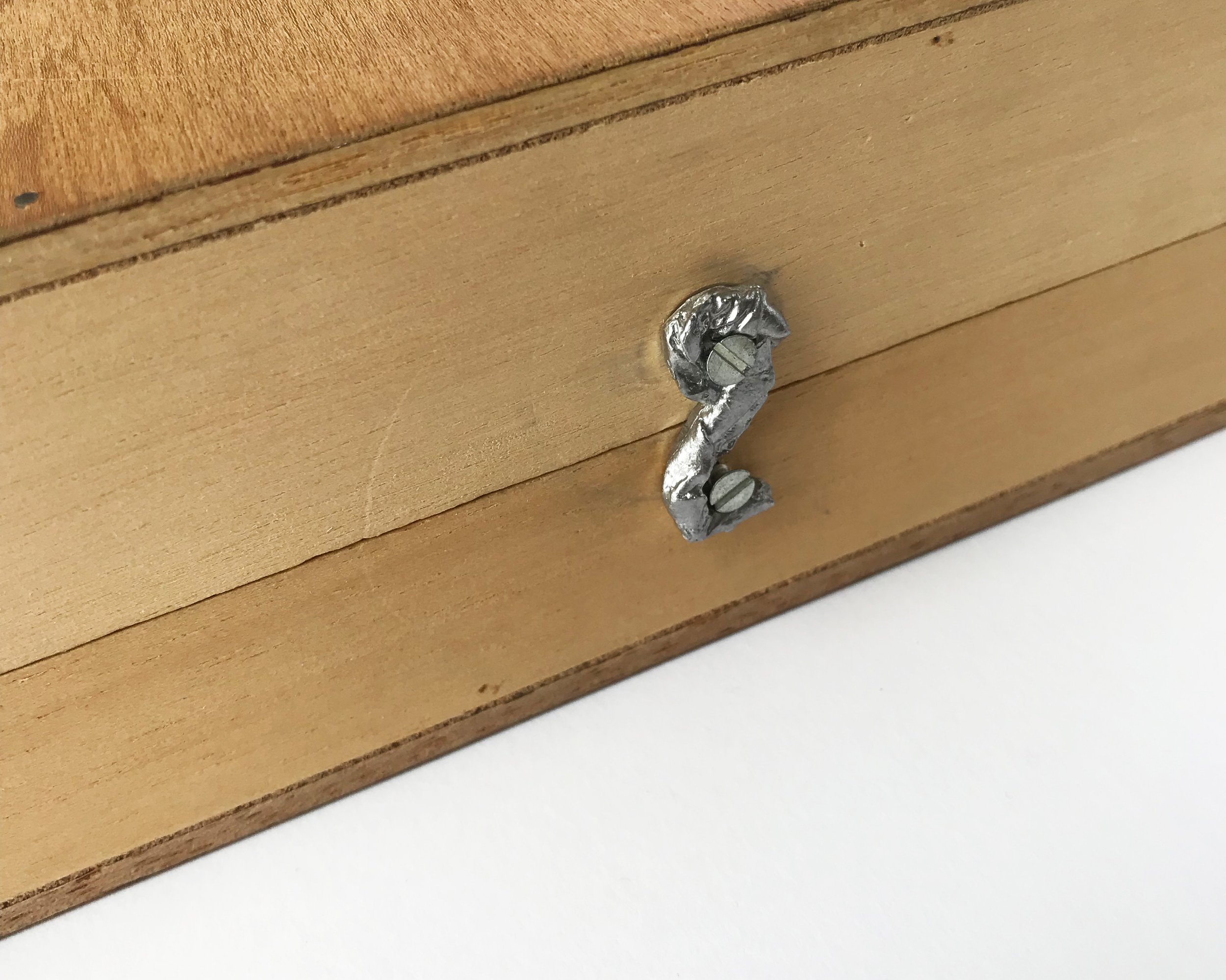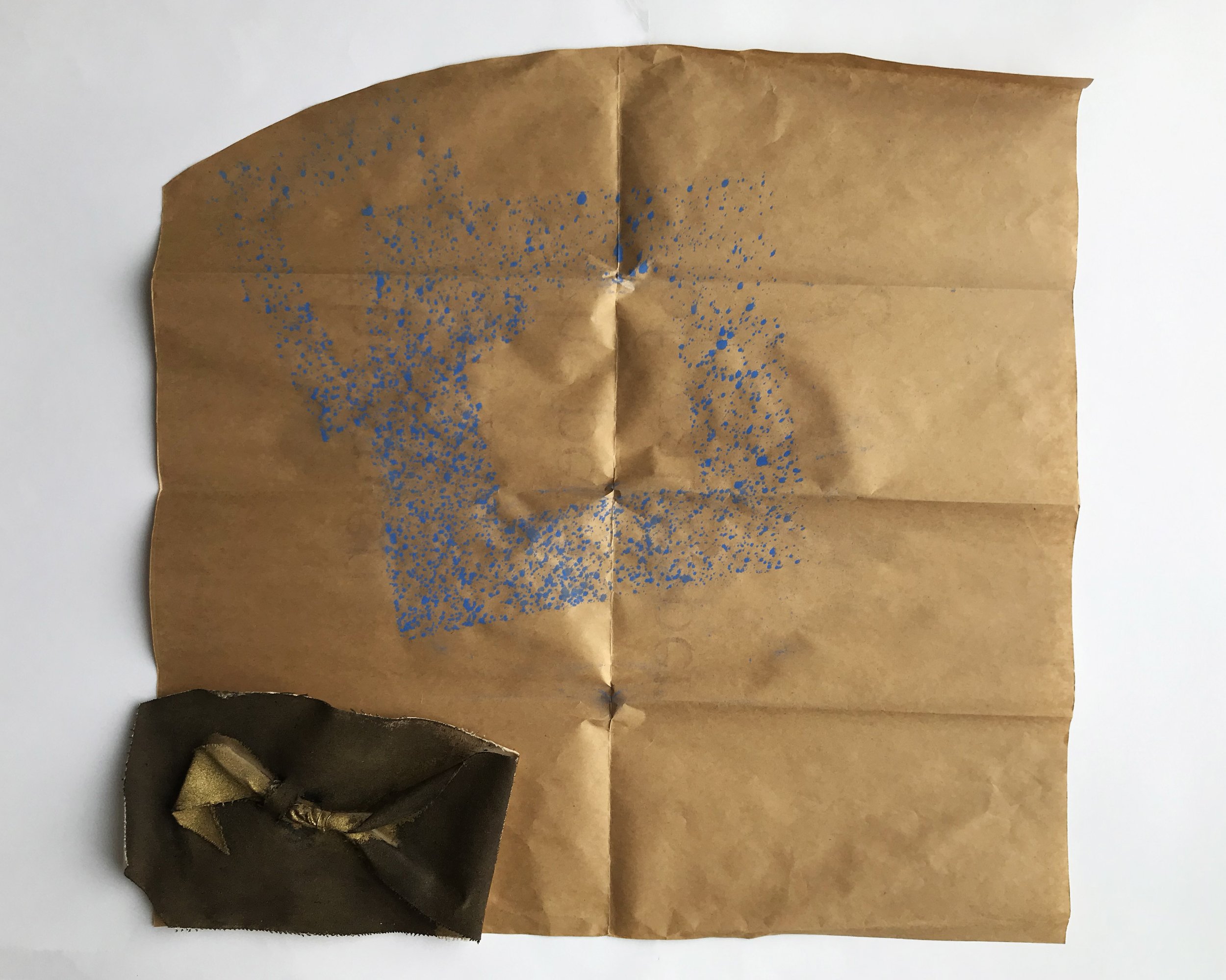Simon Cutts
b. 1944, Derbyshire
Ode for the Rediscovery of the Olympia 66 Portable Typewriter II, 1994-2013
Mixed-media, unique work. Exhibited in Printed in Norfolk: Coracle Publications 1989-2012.
In 1987, Cutts lost his Olympia 66 typewriter, designed by Max Bill in 1939 in a Paris street market. He began a search to find a replacement which he finally discovered in 1994. The artist has written of the typewriter: ‘Its conceptual integrity must be cherished as a tool transposing the notebook jotting to the draft as the first stage of a more formal page of type. This might matter even more than the wonderful playfulness of its availability for so-called concrete poetry, used by poets like Sylvester Houédard and Jirí Valoch, amongst many, fed by the equal spacing of letters of the typewriter‘s mechanics.’
Below:
LYS Glass Poem, 1971
Unique work. Wood, three interchangeable glass sheets, hand-painted lettering. Wooden stand: 140 x 30 mm, height of sculpture: 105 mm. Unsigned, with typed label on underneath of stand.
As well as the name of a river in France, ‘Lys’ can be seen as referring to the floral lily motif of the fleur de lys. The floating of the letters on glass references Claude Monet in his water-garden (Tarasque Press, 1967). The poet also offers the option of reversing the letter ‘s’ as if an anchor.
Saffron, William Allen Editions, London, 2007
Engraved glass multiple, letterpress printed brown card box with yellow/gold printed colophon on the inside of lid. Numbered 7/9, signed. 133 x 133 mm.
The etched poem reads, ‘saffron from the stamens of the lilac crocus’. On the top of the glass are etched and painted saffron strands. Saffron is the most desirable and expensive spice in the world, derived from the dried stamens of the saffron crocus, it has a deep auburn colour. The crocus flower resonates deeply with the history of the twentieth century avant-garde - one of its foremost figures, Dada poet and artist Kurt Schwitters, made The Autumn Crocus (1926-8), a curvilinear abstract form that reveals Schwitters’ exploration of combining geometry with the sinuous, organic shapes he found in nature.
For further information about this work, please phone:
+44 (0) 208 693 3871
+44 (0) 7946 856835
Or send us an email.
with Richard Tuttle, Loophole, Victoria Miro Gallery/Coracle Press, London, 1987.
Book. Artists' multiple featuring a text/collage collaboration between the artist Richard Tuttle and poet Simon Cutts. Limited edition of 50. Signed and numbered by both authors: 2/50. Media as listed on colophon: wood, aluminium, canvas, paper, wire, ink, paint. Wooden box (493 x 353 x 75 mm) containing colophon on brown paper covered plaque mounted inside lower half of case; as well as the work itself: an irregularly folded, sculptural work on paper - featuring a poem by Cutts ('the green calyx of the petals.'), printed letterpress in red on recto (and blue spray painting on verso by Tuttle), and a unique gold painted textile construction by Tuttle with wire elements. The raw-edged fabric has been cut and manipulated to form the 'loophole' - it is attached to Cutts's poem print with two staples. A smaller cut paper collage featuring a pink and green flower has been sandwiched between the two. The American sculptor also made aluminium hooks, cast from twisted cigarette foil papers, for the handmade wooden box. From October 2014 - April 2015, Tuttle exhibited his largest ever work to date in the famous Tate Modern Turbine Hall, London. Revealing Loophole to be symptomatic of his textile practice, the commission is entitled I Don't Know. The Weave of Textile Language which combines vast swathes of fabric designed by the artist (some made with synthetic fibres and some natural) in three vibrant colours. The Whitechapel Gallery also staged a retrospective of Tuttle's artistic career in 2014, focussing on his use of textiles as a site of experimentation. Made nearly 30 years prior, In Loophole, text and textile combine to make a comment on the formal closeness of sculpture and poetry.
POA
On Loan, Coracle Press, London, 1980.
Cards printed black on white in 88 x 60 x 70mm white box, together with 75 x 75 x 85mm outer mailing box. Edition 11 of 15 signed copies. Numbered by Simon Cutts on underside of both boxes.
Published to coincide with the On Loan exhibition (‘an exhibition of borrowed art lent by artists’), 22 November – 19 December 1980 at 233 Camberwell New Road, London. Artists included Roger Ackling, Glen Baxter, David Brown, Marc Camille Chaimovicz, John Christie, Thomas and Laurie Clark, Les Coleman, Simon Cutts, Stephen Duncalf, Sandra Fisher, Barry Flanagan, Hamish Fulton, Bill Furlong, John Furnival, Gerry Hunt, R. B. Kitaj, Robin Klassnik, Brian Lane, Richard Long, Leonard McComb, Stuart Mills, Eduardo Paolozzi, Roy Perry, David Pescod, David Roe, Martin Rogers, S. East Gallery (Sally East), Joe Tilson, Ian Tyson, Steve Wheatley, Stephen Willats, Jonathan Williams and Richard Wilson.
On Loan references the analogue card system once used by British libraries for loaning books. In all, it functions as a list of works for the show, with one card per artist and their exhibited work. In this special edition numbered 11 of 15, each card is signed in ink or pencil by one of the artists who participated in the exhibition.
POA















